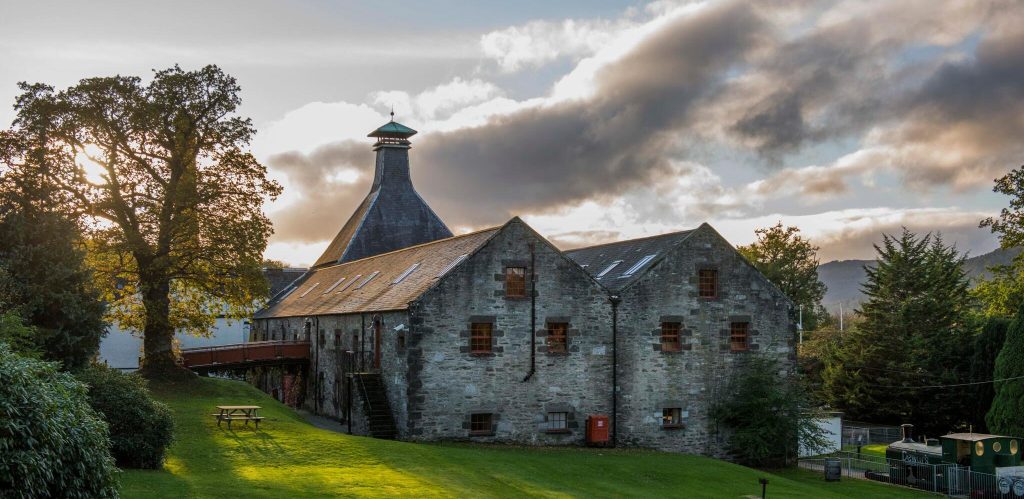There are over 150 whisky distilleries in Scotland spread out over five regions: Highland, Lowland, Campbeltown, Islay, and Speyside. Each region has a history and character of its own and offers unique flavour profiles, from the peaty, smoky whiskies of Islay, light grassy whiskies of the Lowlands, to the fruit-forward whiskies of Speyside.
In this blog, we’ll explore each of these regions, delving into their history and typical flavour profiles, plus we’ll discover some well-known distilleries from each one.
The Scotch Whisky Regions
The Scotch Whisky Association (SWA) officially recognises five distinct regions – Highland, Lowland, Campbeltown, Islay, and Speyside. These regions exist because of historical, geographical, and cultural factors that have influenced the production styles and flavour profiles of the whisky over the centuries.
The regional divisions help to categorise Scotch whiskies based on these unique characteristics, giving consumers an idea of the general flavour profiles and styles they can expect from each area.
Highland
One of the best-known whisky-making regions, the Highland region is arguably the most diverse, stretching from just north of Glasgow right up to Thurso (except for the Speyside Region) and encompasses the islands around the perimeter of Scotland, except for Islay.
History
The Highland region, the birthplace of Scotch whisky, has a rich history beginning with barley farmers distilling from their barns or bothies. By the 18th century, however, illicit distilling flourished across the region, driven largely by the 1707 Act of Union, which imposed taxes on whisky production and fuelled a thriving underground industry.
Flavour Profile
The Highland whiskies tend to have a wide variation of flavour profiles from heather, honey, malt and oak, to heavily sherried expressions, and peaty smokiness, right through to a coastal maritime style of the Islands malts.
Distilleries
Well-known distilleries in the Highland region include Glenmorangie, The Dalmore and Glenturret on the mainland, and Talisker, Jura and Highland Park in the islands.
Lowland
Large by geographical area, but small in terms of malt distillery numbers, this region spans from Glasgow through the central belt of Scotland, reaching east to Fife and extending south to the Scottish Borders.
History
This region was once a hotbed of commercial production, with distilleries producing whisky at an incredible rate but at an inferior quality to the Highland whiskies. Many distilleries became victims of the world wars and the U.S. Prohibition, and by the late 20th century the number of distilleries in this region had plummeted to just three.
Flavour Profile
Lowland whiskies tend to have a gentle light, grassy and floral flavour profile with notes of honey, citrus, and caramel.
Distilleries
Now home to around 20 distilleries, this region is one of the fastest growing. Well known distilleries include Lindores Abbey, Bladnoch, Auchentoshan and Glenkinchie.
Campbeltown
The smallest of the five regions, Campbeltown is based in the sheltered harborside town of Campbeltown at the southernmost end of the Kintyre peninsula.
History
Campbeltown is known as the ‘Victorian Capital of Whisky’ and was once home to over 30 distilleries. However, American Prohibition severely impacted the region, leaving only Glen Scotia and Springbank for many years. In November 2000, Glengyle, which had closed in 1925, reopened, producing whisky under the name Kilkerran.
Flavour Profile
Campbeltown whiskies are known for their rich, complex flavours, sometimes featuring salty, maritime notes, subtle smokiness, and a distinctive oily mechanical note, known colloquially as the Campbeltown ‘funk’.
Distilleries
The well known (and only) distilleries are Glen Scotia, Springbank and Glengyle.
Islay
This region is based on one small island known as the ‘Queen of the Hebrides’, the island of Islay. The region, made up of around 13 distilleries, is world renowned for producing smoky, peated whiskies.
History
Peated whisky has been produced on Islay since the early 18th century. Its coastal location, lack of trees and abundant peat bogs shaped the region’s signature style, with peat traditionally being burned for fuel, giving the whisky its distinctive smoky taste and aroma.
Flavour Profile
Islay whiskies tend to have a flavour profile that can be described as smoky, earthy, and often medicinal.
Distilleries
Well known distilleries include Ardbeg, Lagavulin and Laphroaig.
Speyside
An iconic region, Speyside has by far the largest concentration of whisky distilleries. Tucked into a small, lush corner of northeast Scotland, dominated by the mighty River Spey, it produces over a third of the world’s supply of single malt Scotch whisky.
History
During the early 19th century, the area was an ideal hideout for distillers wanting to escape the notice of the dreaded taxmen due to its often-inaccessible forested foothills and glens. Countless distilleries sprung up during this time in the remote hills above the river Livet – many of them household names to this day.
Flavour Profile
Generally, Speyside whiskies tend to have a particularly elegant fruity flavour profile which includes notes of apple, pear, honey and vanilla. Sherry butts are also commonly used for maturing or finishing whisky, so often you’ll find notes of dried fruit and spice.
Distilleries
Well known distilleries include Macallan, Glenfiddich and Glenlivet.
Every region contributes its own distinct character to the world of whisky. Exploring these regions allows you to not only appreciate the diversity of flavours but also the tradition and craftsmanship behind each bottle.
At Golden Dram, we offer a wide range of whisky casks from all of Scotland’s whisky-making regions and beyond.
Speak to us today, to get your collection started.
